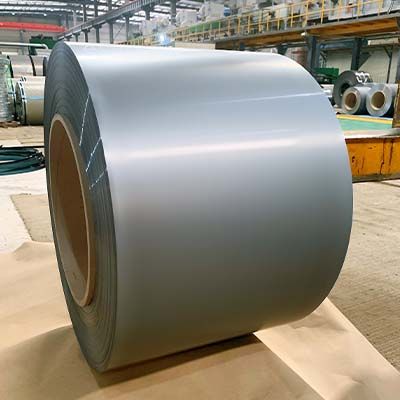Silicon steel, a widely used material in the electrical industry, plays a crucial role in the efficient functioning of transformers. In this article, we will focus on the various aspects of silicon steel in transformers, shedding light on its importance and impact on energy transmission.
What is Silicon Steel?
Silicon steel, also known as electrical or transformer steel, is a special type formulated to exhibit low hysteresis loss and high magnetic permeability, making it an ideal choice for transformer cores. Transformers, the workhorses of our electrical grid, rely on this remarkable material to efficiently transfer electrical energy between different voltage levels.
Silicon steel is a type of electrical steel composed of iron with a small percentage of silicon. The addition of silicon enhances the material's magnetic properties, enabling it to conduct and transfer electrical energy efficiently. The silicon content in silicon steel can vary between 2% and 4.5%, and this small amount has a significant impact on its performance in transformers.
Why is Silicon Steel Used in Transformers?
Silicon steel possesses specific characteristics that make it an ideal choice for transformer cores. Its low hysteresis loss reduces energy dissipation and heat generation, improving efficiency. Additionally, the high magnetic permeability of silicon steel ensures effective magnetic coupling, enabling the transformer to step up or step down voltages with minimal power loss.
High Efficiency
Silicon steel's low core losses and high permeability contribute to the overall efficiency of transformers. Silicon steel helps save electricity and reduces operational costs by minimizing energy dissipation. This efficiency not only benefits the end-users but also supports the global objective of achieving sustainable energy consumption.
Better Regulation
Transformers equipped with silicon steel cores offer improved voltage regulation. The material's high magnetic permeability allows for precise voltage control, ensuring a stable power supply even under fluctuating load conditions. This aspect is especially crucial for sensitive electrical equipment that requires a steady and reliable power source.
Reduced Noise and Vibration
Silicon steel's magnetic properties help minimize noise and vibration levels in transformers. The material's low hysteresis loss significantly reduces the generation of stray magnetic fields, which are the primary cause of noise and vibration. Employing silicon steel cores, transformers operate more quietly and efficiently, enhancing their overall performance.
Compact Design
The exceptional magnetic properties of silicon steel enable the construction of compact transformers. By utilizing thinner laminations of silicon steel, manufacturers can achieve the desired magnetic characteristics while minimizing the size and weight of transformers. This compact design not only optimizes space utilization but also reduces material and transportation costs.
Enhanced Durability
Silicon steel's superior magnetic properties make transformers more resilient to thermal and mechanical stress. The material's low core losses minimize heat generation, leading to lower operating temperatures and increased durability. Additionally, the robustness of silicon steel allows transformers to withstand mechanical vibrations, ensuring their longevity and reliability.
Applications of Silicon Steel in Transformers
Power Transformers: Enabling Efficient Energy Transmission
Power transformers, responsible for transmitting electrical energy across long distances, heavily rely on silicon steel cores. These large transformers operate at high voltage levels and require materials with low core losses to minimize energy wastage. Silicon steel, with its superior magnetic properties, allows power transformers to achieve high levels of efficiency, ensuring the economical transmission of electricity.
Distribution Transformers: Optimizing Energy Distribution
Distribution transformers, commonly found on utility poles or substations, play a vital role in delivering electricity to homes and businesses. The utilization of silicon steel cores in distribution transformers helps reduce energy losses during voltage transformation, enhancing the overall efficiency of the electrical distribution network. Silicon steel contributes to a greener, more sustainable energy infrastructure by minimizing waste.
Specialty Transformers: Catering to Diverse Needs
Apart from power and distribution transformers, silicon steel also finds applications in various specialty transformers. These include instrument transformers, autotransformers, and voltage regulators, among others. By leveraging the exceptional magnetic properties of silicon steel, these specialty transformers fulfill specific requirements in industries such as manufacturing, transportation, and renewable energy.
Conclusion
Silicon steel is a vital component in transformers, enabling efficient energy transfer and enhancing overall performance. With its excellent magnetic properties, silicon steel is indispensable for achieving high transformer efficiency.
If you want further information about silicon steel in transformers, please feel free to contact us at summer@aklgroup.cn. Adopting silicon steel technology will pave the way for a more sustainable and environmentally friendly energy landscape!






